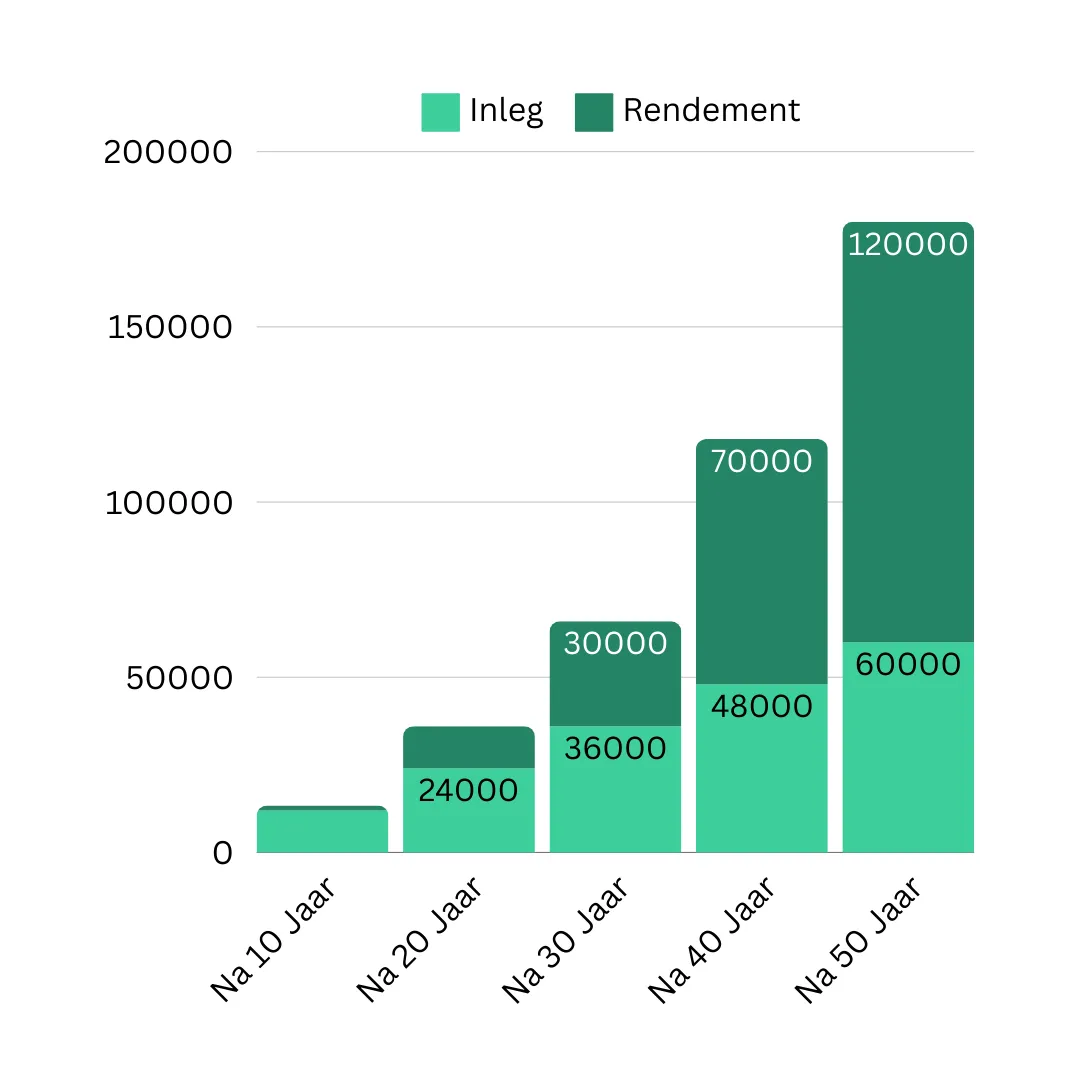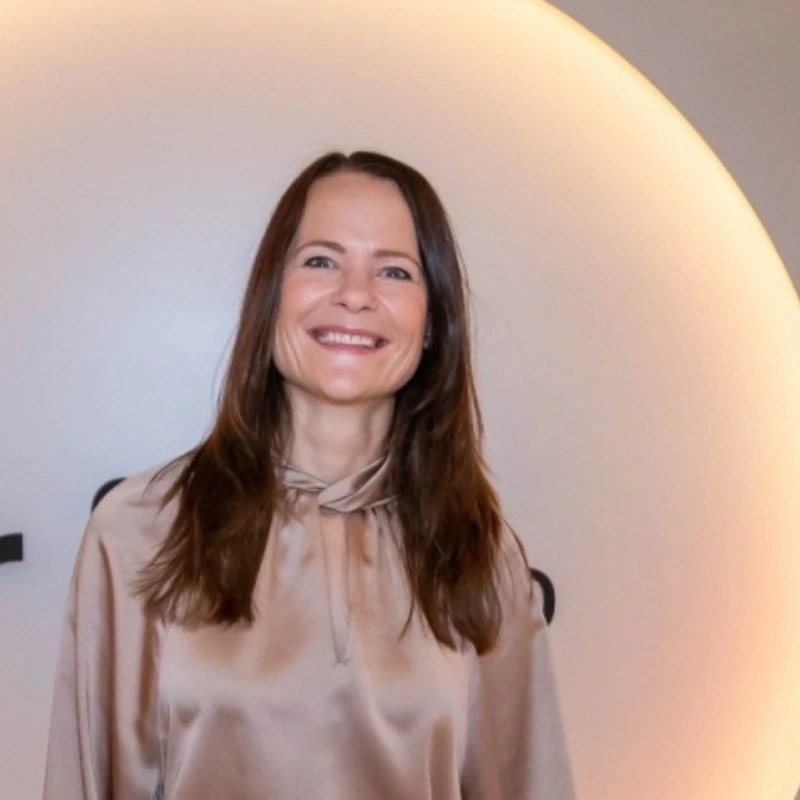What is the return-on-return effect and how can you make the most of it?
Investing is one of the most powerful ways to build wealth. And let's be honest, who doesn't want their money to do the dirty work for them? An important concept to consider is the compound interest effect. This effect is actually a kind of financial snowball that gets bigger and bigger as it rolls down the hill. In this article, we'll go deeper into what the compound interest effect is, how it works, and how you can make the most of it to grow your wealth. So, buckle up, we're on our way to your financial mountain top!
What is the return-on-return effect?
The return-on-return effect, also known as the compound interest effect, is the phenomenon where you not only achieve a return on your initial investment, but also on the return you have previously generated. It's a bit like getting interest on interest, and that interest also gets interest... And so it goes on. Simply put: it is a financial version of "a penny saved is a penny earned eventually yields a whole fruit basket". Bring on that fruit basket!
For example, imagine you invest €1,000 and achieve an annual return of 6%. After the first year, you have earned €60, bringing your total to €1,060. In the second year, you get a 6% return on €1,060, which comes to €63.60. That may seem small, but in the long term this effect can take on gigantic proportions, just like you just can't resist leaving that "one extra cookie" behind.
What is the effect of long-term investing?
The return-on-return effect works best when you invest over a long period. This is because time is a critical factor in maximizing returns. In the early years of investing, the return is like a young tree that grows slowly. But as the years pass, that tree grows into a mighty oak, offering you shade (and perhaps some extra acorns) in your old age.
Suppose you invest €1,000 per year for 30 years with a return of 6%. In the first 10 years, your total return will be modest, but after 30 years you will see exponential growth. This is because you not only get a return on your original investment, but also on all the returns you have achieved in previous years. As a result, your assets grow much faster in the last years than in the first years, a bit like your favorite series that only gets really exciting after season 2.
How does the return-on-return effect help build wealth?
The return-on-return effect is one of the most powerful ways to build wealth because it ensures that your money multiplies itself. It's like your money is throwing a party and inviting more and more friends, and best of all: you just have to enjoy the fun (or in this case, your growing wealth).
For example, if you decide to leave your investments for 30 years, your assets will be many times greater than if you left the same amount for only 10 years. The power of the compound interest effect lies in time. The longer you have to invest, the more you benefit from this effect. A bit like a well-aged wine, it only gets better with age.
You can see an example of this effect in the table below:

What is the best strategy to optimally use the return-on-return effect?
To make optimal use of the return-on-return effect, there are a few strategies you can follow:
- Start early: The sooner you start investing, the longer you can benefit from the compound interest effect. Even small amounts can lead to great results over a long period. Think of that one plant that you planted as a seed and that is now taking over your entire balcony. You want that with your money too!
- Invest regularly: Investing periodically helps to spread risks and ensures that you continuously benefit from the return-on-return effect. It's just like exercising: consistency is key (and it's also good for your finances!).
- Hang in there: Patience is essential. It may be tempting to withdraw your investments in a market downturn, but by persevering and allowing your investments to grow, you will ultimately benefit more. Because let's be honest, even that dramatic cliffhanger in your favorite show had a great payoff, right?
- Reinvest your return: Make sure your returns are reinvested so that they become part of the total amount that generates returns. It's a bit like a snowball that keeps getting bigger: it starts small, but before you know it, you have a snowman!
How does periodic investing work?
Investing periodically means that you deposit a fixed amount on a regular basis, for example monthly or annually. This has a number of advantages:
- Risk diversification: By investing regularly, you spread the risk over different market moments, which can help to absorb fluctuations in the market. Just like wearing a raincoat during a hike: you are prepared for unexpected showers.
- Easier to schedule: Automatically depositing a fixed amount helps to maintain discipline and ensures that you don't forget to invest. This way you don't have to worry, just like you never forget your morning coffee.
- Maximise the benefits of compound interest: Each new deposit contributes to the total amount that qualifies for the compound interest effect, which can lead to substantial wealth in the long term. It's a bit like that one Netflix marathon: the more you watch, the better it gets!
The return-on-return effect is a powerful tool for anyone who is serious about building wealth. By starting early, investing regularly, being patient, and reinvesting your returns, you can optimally benefit from this effect. Investing is not just about the amount of the deposit, but especially about the time you allow your investments to grow. The longer you take, the more you can benefit from the return-on-return effect. And remember, just like a good wine, your investment gets better with time!

maak een afspraak
Klaar voor een moderne oplossing voor pensioen of vermogen? Maak vrijblijvend kennis met Vive en ontdek wat kan - voor jouw organisatie.
Complex pensioen, simpel uitgelegd - weet direct waar je staat
Persoonlijk gesprek voor jouw situatie en die van je werkenemers
In 30 minuten meer duidelijkheid dan uren googlen
Alle ruimte voor vragen aan onze ervaren pensioenexperts









